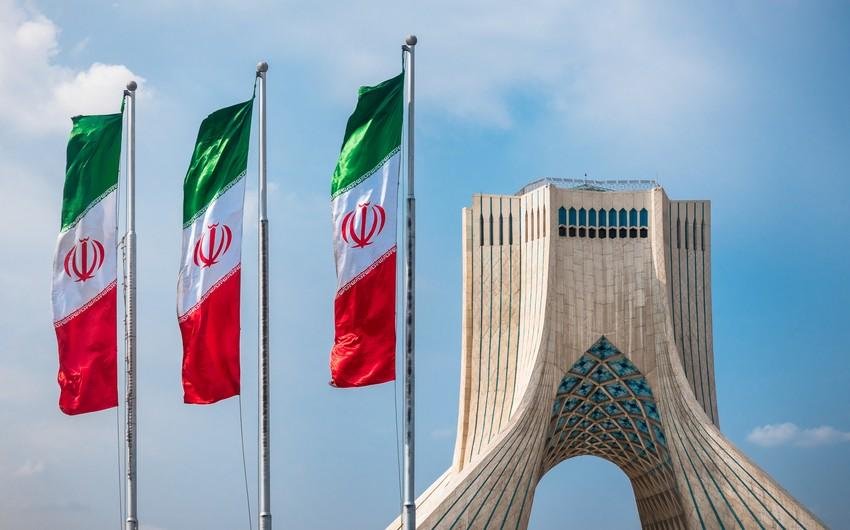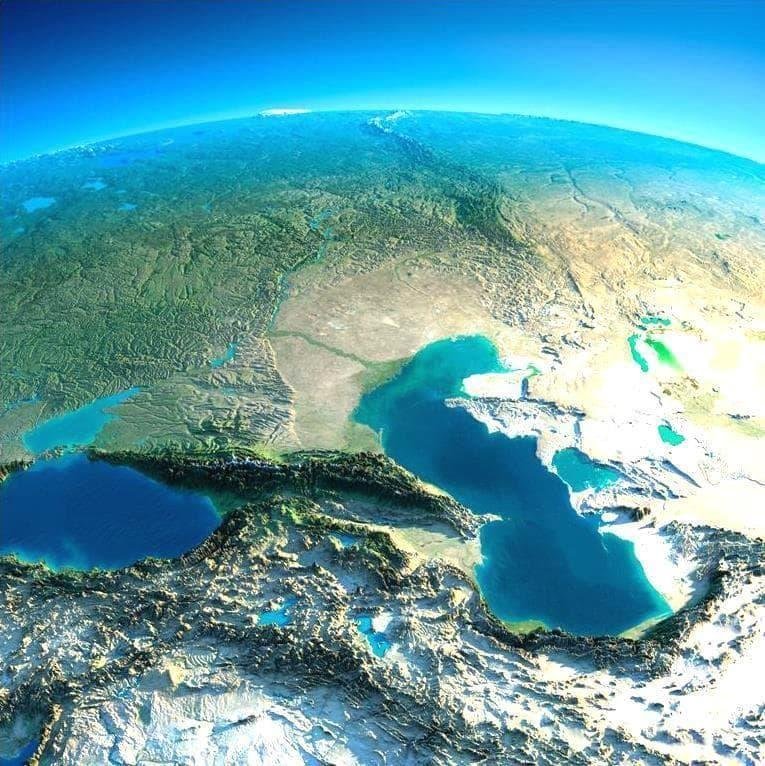Iran gearing up to invade Armenia Caliber.Az insight
Russia is exsanguinated, Grigoryan rushes to Tehran, and the IRGC is preparing the infrastructure in West Zangazur.
Analysis of the actions of Armenia's ruling elite headed by Nikol Pashinyan demonstrates more and more clearly the lack of strategic vision in running the country, and, apparently, reveals nothing but the prime minister's desperate desire to hold on to his position. It should be noted here that for Pashinyan this is not just a matter of ambition but in many ways a matter of survival. This state of affairs in such a tense region as the South Caucasus continues to pose risks to Armenian statehood and territorial integrity.
At first glance, Azerbaijan is not a state interested in preserving Armenia's territorial integrity. However, a deeper look at the problem reveals that along with the destabilization of Armenia, the loss of its statehood, and the fragmentation of this state entity, a strategic danger also looms for our country. This is due primarily to the fact that this scenario is masterminded by third forces, hostile to Azerbaijan.
Speaking about the third forces, we primarily have in mind not Russia, distracted by the war in Ukraine, and not the collective West, represented in Armenia by a harmless, but still small group of spies. We are talking about Iran. Unlike the first two actors listed above, this regional power shares a border with Armenia, not to mention a long border with Azerbaijan.
All the actions of the Iranian leadership after Azerbaijan's victory in the Second Karabakh War and the changes in the geopolitical balance of power in the region testify to their desire to prevent a further shift in the balance of power in the region in favour of Azerbaijan and Türkiye. Closer consideration of numerous statements of Iranian politicians on all levels made after 2020, reveals that Tehran is ready, at least in words, to firmly oppose the hypothetical separation of Western Zangazur from Armenia. Iran also equates construction, as well as the extraterritorial status of the Zangazur corridor, to such alienation. Although Armenia agreed to these conditions having signed the Trilateral ceasefire statement of November 10, 2020.

Iran, on the other hand, says changing borders in the region is a red line for it. "Any change in the geopolitical status and borders of countries in the region is unacceptable," Iranian President Raisi said during a telephone conversation with Putin on 16 November 2021.
In July 2022, already Supreme Leader Khamenei said during a meeting with Putin that Iran would not tolerate the closure of the border with Armenia.
On 26 September 2022, Iranian Foreign Minister Abdollahian made a similar statement during meetings with Azerbaijani and Armenian Foreign Ministers Bayramov and Mirzoyan.
A number of other Iranian high-ranking officials, including the military, also made similar statements.
It is no coincidence that Khamenei used the phrase "closure of the border with Armenia". Tehran fears that the extraterritoriality of the Zangazur corridor running along the border with Iran would allegedly cut the latter off from the Armenian transit "window" to the West and North. But is this window so important for Iran? We often hear that Iran allegedly fears losing its transport access to Europe with the loss of its border with Armenia. However, at the moment, only a small part of Iranian and transit cargoes go to Europe through Armenia. Most go through Türkiye, and to Russia via Azerbaijan. In addition, the logic of the Zangazur corridor absolutely does not imply restrictions on Iranian participation in the shipment of goods.
Thus, Iran's concerns have more political than the economical background. After all, once communications in the region are unblocked and the Zangazur corridor is launched, a united Turkic political space will be created for the first time in centuries - with a high level of Turkic self-identification, geopolitically ambitious, with huge demographic, economic, and even military potential. It is not for nothing that in Iranian media space the Zangazur corridor is called the Turan corridor.
The legendary confrontation between Iran and Turan, storied by Firdausi, is one of the existential foundations of Persian identity. And it is no secret in today's Islamic world that contemporary Iran (the country of the Aryans in the literal translation) continues the tradition of Persian great-power chauvinism, contrary to its declared Islamic values. Within this logic, Iran's desire to disrupt the project of unblocking communications in the South Caucasus seems quite likely.

The hasty opening of the Iranian consulate in Gafan, aggressive rhetoric towards Azerbaijan, regular IRGC exercises near the Iranian-Azerbaijani border, terrorist attacks and threats - all these steps by Tehran are aimed at preventing Baku from implementing the Zangazur corridor by diverting its resources to respond to hybrid threats.
IRI's latest move, signalling its plans, was the appointment of Mehdi Sobhani, until recently IRI's ambassador to Syria, as ambassador to Armenia. The Assad regime's close association with Iranian mullocrats is not a new fact. It is also no secret that Iran finances and controls paramilitary groups in Syria, as well as in several other Middle Eastern states. IRGC units are directly stationed on Syrian territory and engaged in battles on Assad's side.
The opinion of Vardan Voskanyan, Armenia's leading expert in Iran studies, on this matter is curious. "Obviously, the decision to appoint Sobhani as ambassador to Armenia had a political background. It was a concrete message. Tehran is making it clear that it intends to promote its political course in the South Caucasus region more intelligently and clearly," Voskanyan said the other day.
Apparently, the euphemism "intelligently and clearly promote their political course" in this context means "create proxy structures, training camps for militants, prepare terrorist acts, train the Armenian army". It is not incidental, Armenia is already openly saying that in the event of a war for Zangezur, Iran will enter Armenia regardless of Yerevan's consent or disagreement. Head of the "United Armenia" party Ervand Tarverdyan made the due statement noting that "in case Azerbaijan encroaches upon Syunik, Iran will take a military intervention". Moreover, as Armenian orientalist Avraham Gasparyan stated the other day, "Iran can occupy Syunik." "If Iran loses temper, it won't ask anyone, not even Yerevan," he added.

Such information signals in the Armenian media space are not accidental. Caliber.Az learned from diplomatic sources that Iran and Armenia have already reached a preliminary agreement that in case of a direct threat of new Armenian-Azerbaijani border battles, the Iranian army will be quickly redeployed to the still Armenian-controlled part of the historical Zangazur. A certain part of the personnel of Iranian power structures is already being sent to the region in the guise of dealers, drivers, and tourists. In cooperation with the National Security Service of Armenia Iranians select offices and headquarters for the coordination of military operations directly from the territory of Armenia. Also, according to our information, intensive preparatory work has already kicked off for the production of drones on the basis of "Shaheds" for the Armenian army, styled as Armenian military products, since Yerevan does not want to show off its military cooperation with the Tehran regime.

Thus, a curious picture emerges. Despite the aggressive rhetoric, followed by openly hostile actions, such as terrorist attacks, as well as military drills on the border with Azerbaijan, it is not only Azerbaijan but also Armenia which is a target in Iran's military planning. By the way, in our previous analysis, we also pointed out that the IRGC military exercises on the bank of the Araz river may not be aimed against Azerbaijan directly. The Iranian army's workout of the Araz River forcing scenario may also be linked to the potential military operation on the territory of Armenia.
Yerevan is upping the ante by more and more relying on Iran's support. At the same time, Iran sees Armenia not as an equal ally but as a former province, which is delivered to its doorstep by Nikol Pashinyan's team. The geopolitical significance of Armenia for the mullocratic regime, and not only for it, is reduced to the role of a rusty spike in the Turkic belt.
The Russian military presence, the European military reconnaissance mission on the border, the undiminished border with Azerbaijan, where the situation can always explode, the continuation of claims on Karabakh, and now the imminent Iranian military intervention - all this could soon turn Armenia into a Caucasus Syria, divided into sectors of control by external actors, with chaos and internal political instability. Pashinyan's team expects the Iranian army to serve as a guarantor of the country's territorial integrity. However, it should be understood that the introduction of Iranian troops into Armenian territory, regardless of whether Armenia itself invited them, would set a fatal precedent that would be exploited not only by Iran but also by other countries in the region.

By saying "yes" to the Iranian "occupation in the name of salvation", Armenia will inevitably lose its current level of support from the US. Washington did not invest in Pashinyan's team and invite him to democracy summits so that IRGC fighters could march bravely across Armenia. It cannot be ruled out that Armenia is trying to use the Iranian card to persuade Washington to pressurize Azerbaijan into normalizing relations on more favorable terms for Armenia.
However, this kind of diplomatic adventurism does not end well either, especially in relations between the failed state, which is Armenia, and the superpower.
So far, Russia and Türkiye have been serious barriers to Iran's influence in the region. As far as red lines are concerned, for Moscow, they still run through the South Caucasus. Observing how this line, especially in the context of the announced Ukrainian counter-offensive and the inevitable heavy and bloody fighting in Europe, is rolling back more and more rapidly to the Crimean shores, the mullahs are eager to fill the vacated gap faster "before the Turks get there". Russia's forced refusal to play a major role in the implementation of the Zangazur corridor has given the mullahs some confidence in their actions in the Caucasus. The dependence of the Russian defence industry on supplies from Iran (which, incidentally, are now conducted not so much via the Caspian Sea but rather via the military airfield at Erebouni) also contributes to Moscow's loosening grip and the euphoria of the Iranians, who hold themselves out as the key power in the region.
Despite this, the Kremlin is still trying to counter Iran's overt interference in Armenia, with talks still underway to allow a CSTO mission to the notional Armenian-Azerbaijani border. "It is up to Armenia," Russian Foreign Ministry spokeswoman Maria Zakharova said, hinting that Yerevan is reluctant to receive CSTO. Against this backdrop, the secretary of Armenia's Security Council hastily left for consultations in Tehran.
If negotiations with the Kremlin fail, it is possible that Russia will start activating its proxy groups in Armenia. In any case, the presence of IRGC units in the region will sooner or later lead to clashes between different groups within Armenia.
Azerbaijan, which is in tandem with Türkiye, is bracing for the possible 'Syrianisation' of Armenia. To do this, the Karabakh issue must be definitively closed, and in parallel ... our country should keep on increasing its armament. There is no other option in a world where the rule of force overshadows the rule of law.








